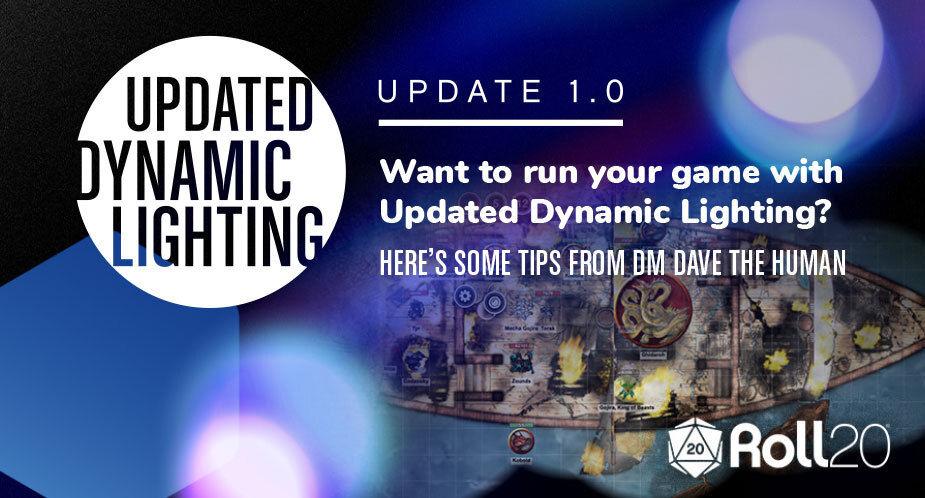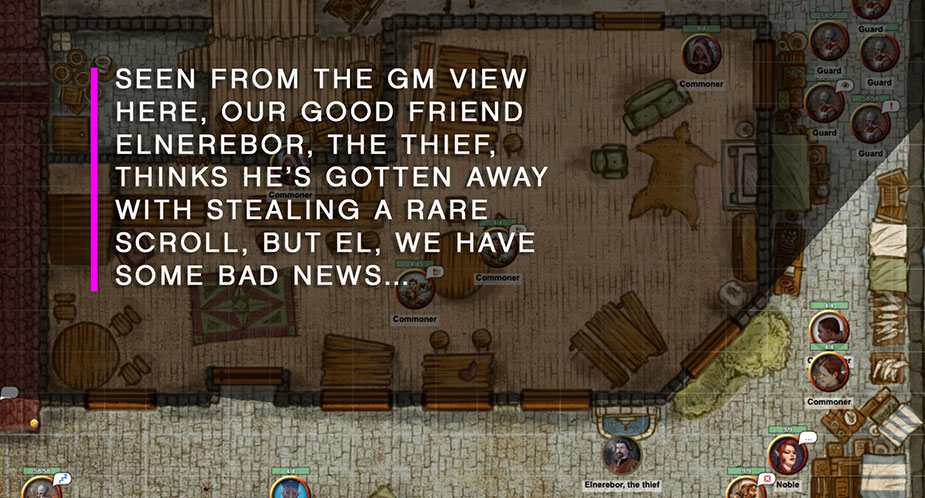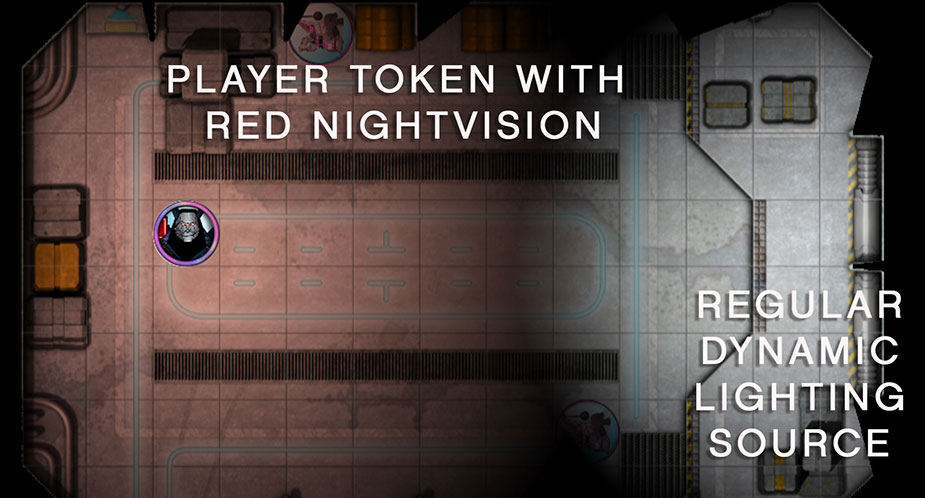Guest Blog: An Introduction to Lines and Veils
Safety tools have been a major part of the tabletop scene the past few years. It has been wonderful(...)


I think I can safely say that Dynamic Lighting is my favorite feature on Roll20. Don’t get me wrong, the Compendium integration and the drag-and-drop creatures with tokens are also pretty high up there, but I have to say that Dynamic Lighting Takes the spotlight.
Some of my absolute favorite experiences using Roll20 have come from taking advantage of Dynamic Lighting and couldn’t have been done without it. Dynamic Lighting is unique in providing direct visual feedback in tabletop roleplaying games. By that I mean, as opposed to a Game Master or Dungeon Master just telling you that you can see things in the room, you actually can see things in the room. The goblins will be there at the edge of your torchlight, creeping up to the corner to peek around. The light will show you the empty room, but not the assassin pressed up against the wall waiting to strike. It’s a layer of immersion that can provide new information without the need for verbal description.

“But why is that important?” you might ask. “My GM can tell me that all of a sudden I see a dim light in the distance, and my shock or suspicions will be the same.” Personally, I think that there is in fact a difference in experience between being told you discover something actually being the one to discover it. You enhance your own sense of agency over a game and control of your character by seeing what they do in a way that can’t be replicated otherwise. Let me explain what I mean:
Imagine the difference between a jump scare in a videogame and a movie. They might both be equally able to make you jump, but when you have the controller in your hands, the moment after when you react is the part that really elevates interactive media in my mind. This is getting a little bit off track, but I think the distinction I’m trying to describe is an important one that separates a sense of discovery and description. Maybe I’m overcomplicating things, but the only way to prove me wrong is to try it out, right?

I think this experience is one that both players and Game Masters can enjoy. Having been on both sides of the table, I can’t decide whether it’s more satisfying to react to a player coming around a corner to see your horde of monsters, or watching that player’s face as they realize what you’ve done. It’s like giving presents. Deadly, terrifying presents. Or I suppose the glorious MacGuffin at the end of a long dungeon, but I think the order of my examples probably says more about me than the efficacy of the feature.
That’s not really describing the full scope of Dynamic Lighting as a feature though, just one of the huge amount of experiences that you can craft. It’s totally up to your imagination on what you can create. With Dynamic Lighting, you don’t just light an area--you define it in a physical way that you don’t have to constantly repeat. “How long is the corridor again?” is a thing of the past.
Sometimes a player won’t know the answer, though. Dynamic Lighting doesn’t just allow for static points of light, wall sconces or braziers, or whatever; it’s more dynamic than that. You can set how far the torch the character’s holding allows them to see, both brightly and dimly with the options to set the intensity of the light at different distances and a smooth gradient off into darkness at the edge of vision.
Some games allow characters night vision or infravision or something, but that’s accounted for too! If they can see everything in one colour (I’m in England the u stays) [ED’S NOTE: Everybody gets one.] there’s an option for that. The two even interact, with the night vision regaining color when it reaches the area around a light source in the distance.

Decorating your dungeon or spaceship with Dynamic Lights, on top of your fancy animated emergency power light token, gives the space an immersive realism and coherence. Heck, why not twin that light with a jukebox claxon track? One of those wee-ooo wee-ooo ones after they stumble the laser tripwire their Perception score missed?
If the monsters in the cave can’t see in the dark, they’d keep it well lit. The adventurers immediately know that their elf rogue can use this to their advantage if they snuff out the lights in a room with a gust of wind.
You know what they say: A picture is worth a thousand words, but I think being able to see it is probably much more important.

Dave Human
GUEST CONTRIBUTOR Dave Human (they/them) is another hapless denizen of the internet who hates having to use Twitter as much as you do but is compelled by equal parts self-loathing, morbid curiosity, and the maintenance of an internet presence to stay there. They're in the videogames and TTRPG spheres as a fledgeling designer whenever they can push past the executive dysfunction to actually make anything. Don't worry, they'll get there eventually! Much to their continual surprise they are now GMing a Dungeons & Dragons show for Roll20 on the official D&D Twitch channel and would love it if you could swing by and offer up some of that sweet, sweet external validation.
Safety tools have been a major part of the tabletop scene the past few years. It has been wonderful(...)
I love sci-fi horror, and I love a good flow chart, so you can imagine that Mothership is right up(...)
GM: “So are you sneaking in or are you going full bear?”